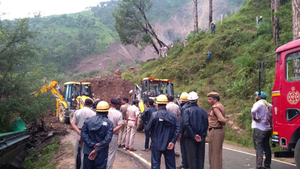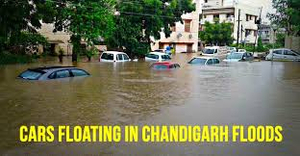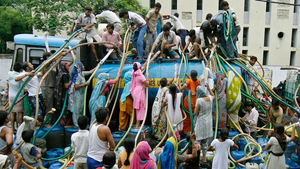Cities and Resilience Strategies

By Tikender Panwar
Today, while travelling in a cab in Delhi, ‘Surender Rawat’ the driver of the taxi made an interesting comment that ‘Delhi’ has not just changed but the city shows many surprises with respect to the changes in climate and weather, which affects the poor more but still there is something in the city because of which it still moves on. Was he speaking about the weakness or the strength of the city, I wondered. I guess both. I think this is what resilience is all about.
Just recently, we witnessed rain in Chandigarh which wasn’t too torrential, but in just three hours the city got completely flooded with large scale disruption. Similarly, in Shimla which is a mountain city, massive landslides have become a common phenomenon. Likewise, we have witnessed intermittent outbreak of water borne diseases which engulf very precious lives. There are innumerable such cases from Gorakhpur in Uttar Pradesh where hundreds of children die because of Encephalitis every year, to Chennai where in two consecutive years we find floods and a drought. In both the cases, people lose their lives.

The question here is can this be checked and can the cites bounce back with its strength for a better future and living? The answer to me is yes. And that is what resilient strategies have to be all about.
The cities desperately require to find out its strength and intervene enhancing its capacities to prove that they can deliver well. This could only happen if they are empowered not just politically but also the capacities are raised to understand, adapt and effectively execute the strategic plan of development.

Drought in Chennai
One of such exercise is the capacity building and mainstreaming of the disaster risk reduction in various cities in which ICLEI South Asia plays a pivotal role. Some of these cities include Siliguri, Coimbatore, Rajkot, Shimla and a dozen more. The intervention is both at the macro level city planning and also at the micro – project level where specific interventions are made and the theory is taken to practice.
The preparation of City Resilience Index (CRI), greenhouse gas emission inventory are such macro level interventions which are further being mainstreamed into city development plans of the respective cities. Such intervention has helped the city to steer its role, and intervene for a more integrated approach like the formation of a complete integrated Shimla water supply and sewerage circle where there is complete integration of both these services right from the water lifting to distribution.

Chennai drought
The resilience factor can be easily witnessed that in the following year not a single case of Hepatitis was reported though in the preceding one more than 20 died and nearly 2500 got infected. In a similar fashion, we find the effective implementation of micro level interventions in solid waste management in Siliguri, transport in Coimbatore and so on.
But the issue is will such macro level documents, studies be effectively integrated into the overall planning process. This is the challenge for the city governments who will have to own these studies and press their foot on to ensure such studies are properly linked to the overall planning strategies which unfortunately remains a daunting task to implement.
 Tikender Panwar is the former Deputy Mayor of Shimla.
Tikender Panwar is the former Deputy Mayor of Shimla.



